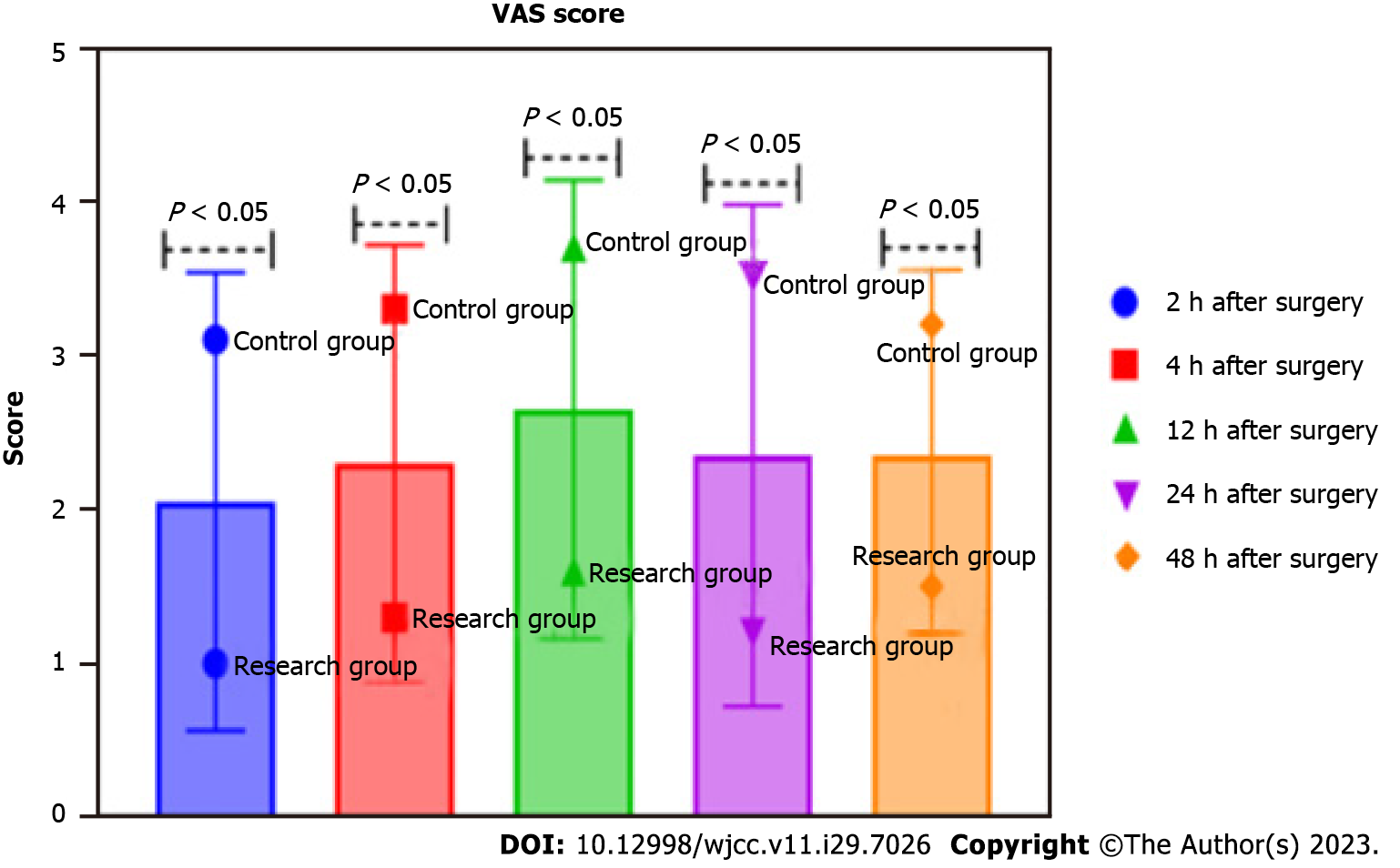Copyright
©The Author(s) 2023.
World J Clin Cases. Oct 16, 2023; 11(29): 7026-7033
Published online Oct 16, 2023. doi: 10.12998/wjcc.v11.i29.7026
Published online Oct 16, 2023. doi: 10.12998/wjcc.v11.i29.7026
Figure 1 Comparative of sensory block time (mean ± SD).
A: Sensory block onset time; B: Sensory block perfection time; C: Sensory block of duration. The duration of sensation in the research group is longer than that in the control group. P < 0.05 indicates that there is a significant difference in the duration of sensation between the control group and the research group.
Figure 2 Comparative of motor block time (mean ± SD).
A: Motor block onset time; B: Motor block perfection time; C: Duration of motor block. The exercise duration of the research group was shorter than that of the control group. P < 0.05 indicates that there was a significant difference in the exercise duration between the control group and the research group.
Figure 3 Comparative of visual analogue scale scores (points, mean ± SD).
The visual analogue scale (VAS) score of the research group is lower than that of the control group after surgery. P < 0.05 means that the VAS score of the control group and the research group at different time points (2 h, 4 h, 12 h, 24 h, 48 h) after surgery, the variance is significant difference. VAS: Visual analogue scale.
Figure 4 Comparative of hip flexion and abduction range of motion between the two groups after surgery (°, mean ± SD).
A: Bucking; B: Outreach. Contrasted with the control group, the research group has greater degree of hip flexion and abduction after surgery. P < 0.05 means that the control group and the research group at different time points (24 h, 36 h, 48 h, 7 d, 15 d after the surgery) hip flexion contrasted with abduction activity, the variance was significant difference.
- Citation: Tong SX, Li RS, Wang D, Xie XM, Ruan Y, Huang L. Artificial intelligence technology and ultrasound-guided nerve block for analgesia in total knee arthroplasty. World J Clin Cases 2023; 11(29): 7026-7033
- URL: https://www.wjgnet.com/2307-8960/full/v11/i29/7026.htm
- DOI: https://dx.doi.org/10.12998/wjcc.v11.i29.7026












